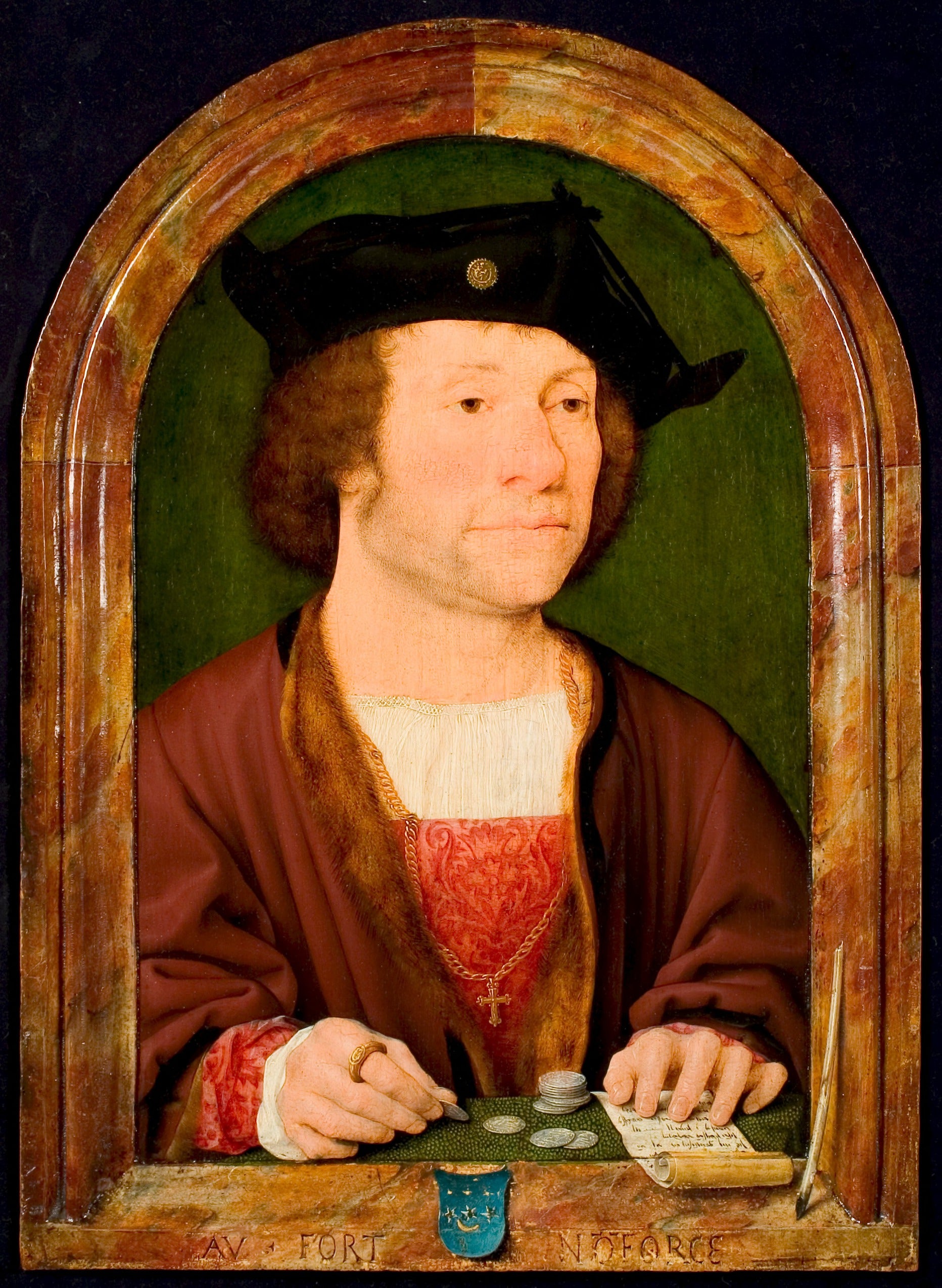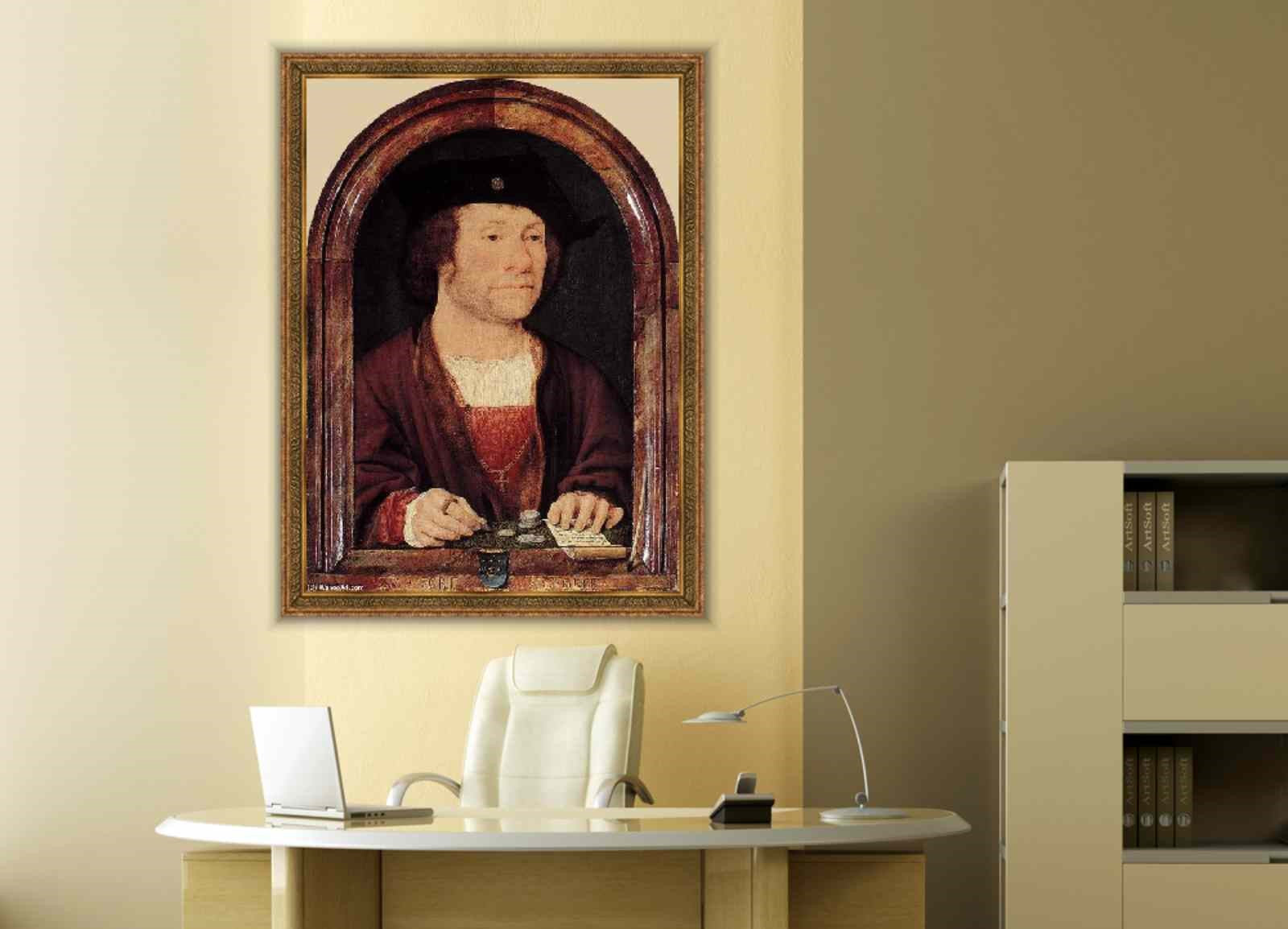Description
Among the Renaissance portraits that have survived the passage of time, few manage to capture the essence of an era as clearly as the Portrait of an Unknown Man, attributed to Joos van Cleve and painted around 1515-1520. This work, executed in oil on panel and preserved in the collection of the Rijksmuseum Twenthe, transports us directly to the mercantile life of 16th century Europe.
The central figure, depicted with meticulous precision, appears to be a money changer or merchant, seated at his desk while counting coins and recording his transactions. His hands, firm and sure, manipulate the pieces with the confidence of one accustomed to handling money. Beside him, a rolled-up parchment and a sheet with notes reinforce the idea that we are facing a man of numbers, someone whose prosperity depends on organization and precise calculation.
The painted architecture in the background and the illusionistic arch-shaped frame create the sensation that the subject is emerging from his world into ours. This device was typical in Flemish painting of the time, as it sought to integrate pictorial representation with the viewer's perception. The attention to detail, from the textures of the fabrics to the reflections on the coins, is a testament to Van Cleve's technical mastery.
His clothing suggests that he belonged to an affluent class: the elegant fur-lined mantle, the black hat adorned with a small golden insignia, and the fine chain with a crucifix indicate his social position. However, unlike portraits of aristocrats or members of royalty, here we do not find excessive ostentation, but rather an image of sober efficiency.
At the bottom of the frame, there is the inscription "AV FORT N FORCE", which can be interpreted as a play on words between fortune and strength, a reminder that wealth is not obtained without effort. Next to this phrase, there is a small blue shield with three stars, which could refer to a guild or family symbol.
A testament to trade in the Renaissance, this portrait is more than just a simple image of an individual; it is a visual document of the economy of its time. In the 16th century, money changers and merchants played a fundamental role in society, as they facilitated international trade and the exchange of foreign currencies. Flemish cities like Antwerp, where Van Cleve worked, were nerve centers of European trade, with a prosperous bourgeoisie beginning to commission portraits like this to reaffirm their status.
The realism with which Joos van Cleve captured the features of the character makes us wonder about his story: was he a respected man in his community or viewed with suspicion, as was often the case with moneylenders of the time? His expression, calm yet reserved, seems to hide more than it reveals.
This is the power of Renaissance art: to turn a moment in the life of an anonymous person into a timeless work that continues to fascinate us centuries later. In this portrait, Joos van Cleve not only left us an image of a man, but a reflection of a whole world in full transformation.



